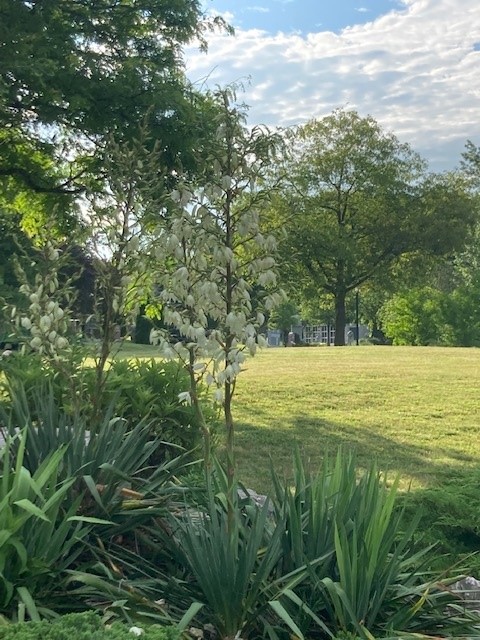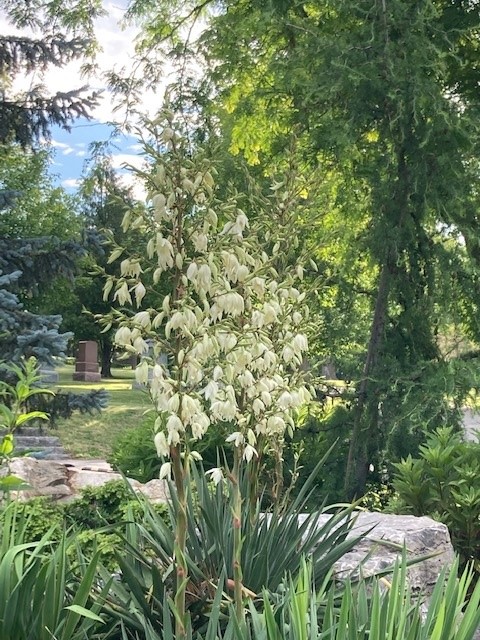
In the Gardens: Adam’s needle and thread in bloom
The Yucca filamentosa comes in many different names including Adam's needle, common yucca, Spanish bayonet, bear-grass, needle-palm, silk-grass, and spoon-leaf yucca. This species of flowering plant is part of the Asparagus family which is native to the southeastern United States. Originally, native to beaches, sand dunes and fields from South Carolina south to Florida and Mississippi, it has escaped cultivation and extended its original range north into Southern Ontario and the New England ranges.
The Yucca filamentosa is a virtually stemless shrub that looks more like a perennial plant. The blade-like leaves form a basal rosette ending in spines. The foliage clumps are usually 2 to 3 feet tall, with curled threads lining the edges of the leaves, giving it its species name—filamentosa—for its threads or "filaments."
Mature plants about 4 or 5 years old will send up flower stalks from the center of the foliage in late spring, which can double the height of this yucca plant, sometimes growing to over 8 feet tall. The blooms look like nodding, white bells.
The Yucca filamentosa is best used in borders, dry garden area. It adds great architectural height to a garden with out the need for must fuss. Its also great for areas that receive road salt runoff as its it quite a resilient plant. Yucca filamentosa can be planted almost any time, though it is most commonly available at nurseries in the spring. However, transplanting, or taking basal offsets of Y. filamentosa is best done in the fall.
Yucca filamentosa has virtually no severe disease or pest issues. Adam's needle attracts butterflies but also draws earwigs; these pests are unlikely to do any serious damage to the plants.
Chief Horticulturalist Tips: Winter burn may affect some of the leaves with Ottawa’s cold, windy winters. By late summer, start to reduce the amount of water the plant receives. Stop watering entirely by September. Yucca plants will stop storing water in their leaves during dormancy over the winter, protecting the plant from deep freezes.
Located near the stream in front of the Sacred Space.


